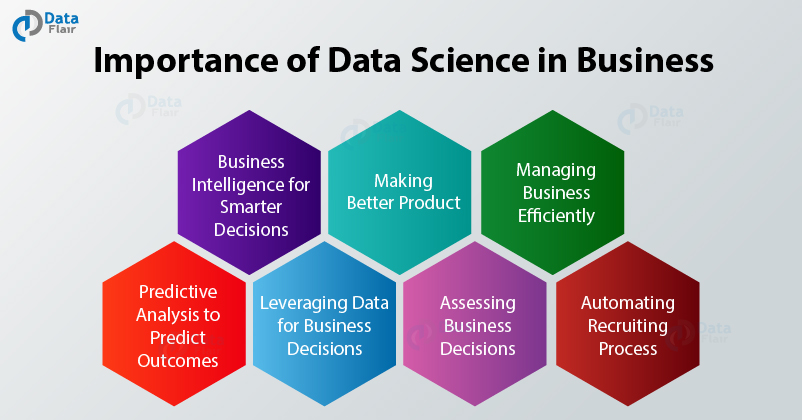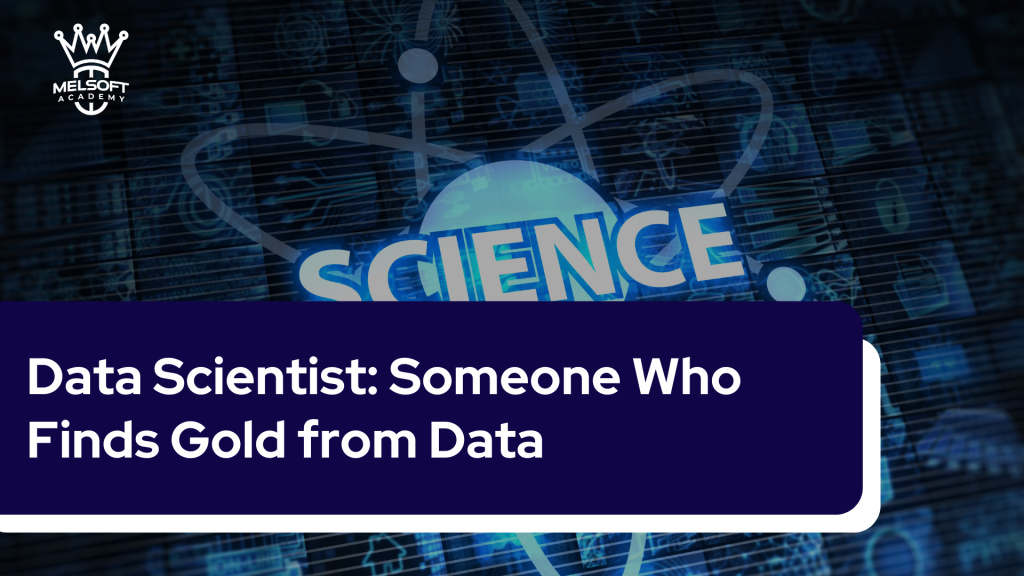In today’s digital age, data is ubiquitous, generated from countless sources like websites, online stores, and smart devices. While many see this data as meaningless noise, data scientists recognize its immense value. They view data as raw material, like oil, waiting to be refined into gold—that gold being the valuable insights hidden within. This article delves into the world of data science, exploring what it is, what data scientists do, and how you can embark on this exciting career path.
Key Takeaways
- Data science extracts actionable insights from raw data.
- Data scientists follow a structured process involving problem definition, data collection, exploration, analysis, and storytelling.
- Python, R, and Julia are popular programming languages for data science.
- A strong foundation in statistics, mathematics, and programming is essential for aspiring data scientists.
- Melsoft Academy offers comprehensive data science training to equip you with the necessary skills.
What is Data Science?
Data science, though not a new field, has gained immense popularity with the rise of big data. It combines data with scientific methods to answer data-related questions. It involves learning about, exploring, analyzing, and manipulating data, often using technology, to uncover hidden patterns and insights. Essentially, data science is the process of extracting valuable insights from data of any size. These insights, the “gold” extracted from the data, inform decision-making and problem-solving.
What Does a Data Scientist Actually Do?
Like mining for gold, extracting insights from data is a complex process, often involving multiple iterations and specialized tools. Data scientists typically follow these five steps:
- Problem Statement: The process begins with defining a clear problem or question that needs to be addressed using data. A strong sense of curiosity drives data scientists to explore and find answers. For example, a problem statement might be “How can we improve our recommendation system to increase customer purchases?”
- Data Collection: Once the problem is defined, data scientists identify and gather the relevant data. This data may come from public repositories like Kaggle or require collection from specific sources. For instance, analyzing Twitter sentiment requires collecting tweets from users. Data engineers often assist in organizing and retrieving data from a company’s data warehouse.
- Data Exploration: This stage involves understanding the collected data. Whether structured (organized in rows and columns) or unstructured, data scientists must understand the meaning and context of the data. This includes visualizing data, summarizing it using statistical methods, and cleaning the data by handling missing values, removing outliers, and encoding categorical data. Feature engineering, which involves creating new features from existing ones, may also be performed to enhance data quality.
- Data Analysis: With prepared data, the analysis phase begins. This requires expertise in data analysis techniques, machine learning, and deep learning algorithms. Data scientists must understand how these algorithms work, including the underlying mathematical principles, to choose the appropriate algorithm for the task. Model building, testing, and evaluation are crucial steps. Data scientists use evaluation metrics to assess model performance and iterate until satisfactory results are achieved.
- Storytelling with Data: The final stage involves communicating the extracted insights clearly and effectively, even to non-technical audiences. This requires strong communication and presentation skills, both written and verbal. Data scientists create reports and presentations to convey their findings and recommendations. They also monitor the impact of these insights on decision-making and iterate the process as needed.
Which Programming Languages Should I Choose for Data Science?
Three popular programming languages stand out for data science:
- Python: A versatile, open-source language with a rich ecosystem of data science libraries. Its readability and large community make it a popular choice for beginners. While slower than R and Julia, its ease of use and extensive resources make it a strong contender.
- R: Specifically designed for statistical computing and data analysis, R boasts a powerful statistical ecosystem and a large community. While historically popular, it has been somewhat eclipsed by Python in recent years.
- Julia: A high-performance language designed for scientific computing, Julia offers speed comparable to C or C++. While its data science libraries and community are still developing, its speed makes it a promising language for the future of data science.
Why is Data Science Important?

The phrase “data is the new gold” highlights the immense value organizations place on extracting insights from their data. In our increasingly digital world, every action generates data, creating vast amounts of unstructured information. Data science brings together statistics, mathematics, and other disciplines to find patterns and create value from this data.
Data science enables businesses to optimize operations, personalize customer experiences, and make data-driven decisions. From recommending products to delivering millions of packages daily, data science powers many aspects of our lives.
How Can I Learn Data Science?
In a data-driven world, understanding the fundamentals of data science, business intelligence, and data-driven decision-making is crucial. Advanced data science skills involve learning supervised and unsupervised learning, clustering, evaluation metrics, and data science tools. Python is the most common language for machine learning, AI, and data science applications.
Melsoft Academy’s new data science course provides comprehensive training, equipping students with the knowledge, skills, and experience needed to succeed in this field. The course covers data science tools, algorithms, machine learning techniques, and statistical methods, enabling students to uncover hidden insights and inform business decisions.
FAQ:
- What is the average salary of a data scientist? Data scientist salaries vary based on experience, location, and industry, but generally command competitive salaries.
- What are the career prospects for data scientists? The demand for data scientists is high and projected to grow, offering excellent career opportunities.
- What are the prerequisites for learning data science? A strong foundation in mathematics, statistics, and programming is recommended.
- What are some common data science tools? Common tools include Python libraries like Pandas, NumPy, and Scikit-learn, as well as R and specialized software.
- What is the difference between data science and machine learning? Machine learning is a subset of data science that focuses on building algorithms that learn from data.
- How long does it take to become a data scientist? The learning path varies, but comprehensive training programs and dedicated learning can lead to a career in data science within a reasonable timeframe.
- What industries use data science? Data science is applied across various industries, including healthcare, finance, retail, and technology.
Conclusion:
Data science is a dynamic and rewarding field, offering the opportunity to extract valuable insights from raw data. By following a structured process and utilizing the right tools and techniques, data scientists uncover hidden patterns and inform critical decisions. The demand for skilled data scientists continues to grow, making it an exciting career path.
In today’s data-driven world, understanding and utilizing data is essential for success. Melsoft Academy’s data science bootcamp provides the comprehensive training you need to embark on this exciting journey. Our course equips you with the skills and knowledge to unlock the power of data and contribute to a rapidly evolving field.
Take the first step towards your dream job!
Apply Now: Browse Our Bootcamps – https://melsoftacademy.com/courses/
Download our Prospectus: Download Now – https://melsoftacademy.com/prospectus/


